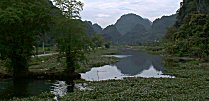Work Program III (WPG III): Modelling and recommendations (Leader: Jan Radomski, Interdisciplinary Centre for Mathematical and Computational Modelling, Warsaw, Poland
Workpackage 9 Modelling of virus survival and concentration in natural water reservoirs and soiled surfaces
WP leader: Jan Radomski, Interdisciplinary Centre for Mathematical and Computational Modelling)
Participants: ICM, IPC, CIRAD, IPP
Using data generated in WPG I and II, models will be build on virus perpetuation in natural water reservoirs and soiled surfaces. The former is of paramount importance because it is part of the whole virus cycle in nature. This WP will be connected to modelling studies developed in other tasks such as tasks 3, mainly focused on the ecology of the host and task 4 in order to explain the global mechanism of virus perpetuation in nature. This project is focused on environmental issues.
The centre of the world of influenza viruses (IVs) is made of viruses infecting aquatic birds, which are their ancestral hosts. In reality, little is known about the ecology of these viruses although some data have been accumulated about wild bird infection. The way AIVs are perpetuated in nature is not fully understood. A lot of data are missing concerning the duration of influenza infection in wild birds, and the dynamic of viral circulation in wild and domestic birds. Our objectives are to study possible models explaining the perpetuation of the virus throughout the year. Putative assumptions, based upon current understanding of AIVs transmission and reservoirs in Nature can be summarized by the conceptual models:
1) In this model with environmental reservoir, the cycle would be as follows: birds go north to reproduce and have offspring in summer. These are contaminated by AIVs as they are young and receptive as human children are when they first go to school. Then it becomes cold, the birds, including the youngest ones, start they migrating journey towards the South, leaving water reservoirs in the North (lakes, rivers and ponds) contaminated with considerable amount of virus. The cold season with icing temperature keeps the viruses viable until next spring. The birds migrate south and when they pause during they travel, they meet other birds from other places and other species and they cross contaminate each other by polluting waters with their viruses. The more they go south, the less they are infected because their immune system gets rid of the AIVs. Arrived in the South (Africa), hardly any bird is infected, and the physical conditions there are not favourable for AIVs survival. The birds, when they come up towards the North during the following spring, are not infected but their offspring will become infected, because AIVs had been kept in frozen waters until then. In this model, it is assumed that no virus can contaminate waters in the South long enough to play a role in AIV global cycle, but an alternated variant model could take this possibility into account as well.
2) In this model (without environmental reservoir) the cycle would be as follows: birds go North to reproduce and have offspring in summer. The newly born birds are receptive to infectious agents. Then, it becomes cold and the birds, including the youngest, start their migration towards the South. The birds start migrating without leaving lakes and ponds heavily contaminated with viruses. The birds migrate south and when they pause, during their migration, they meet other birds from other places, and other species, spreading the viruses between them. Virus circulation is then sustained by continuous passages of virus from infected to non infected susceptible birds. The birds population continues to harbour AIVs among individuals. When they come up towards the North during the following spring, their new babies will be infected because the virus has permanently been circulating among the parental population. The partial renewal of the bird population with yearling chicks will cause an increase in virus circulation and spread.
3) There are possible model variants which assimilate parts of the above models, including possible other factors, like an effect of AIV reservoir in domestic and free ranging poultry (not migrating), farms manure, etc.
|


